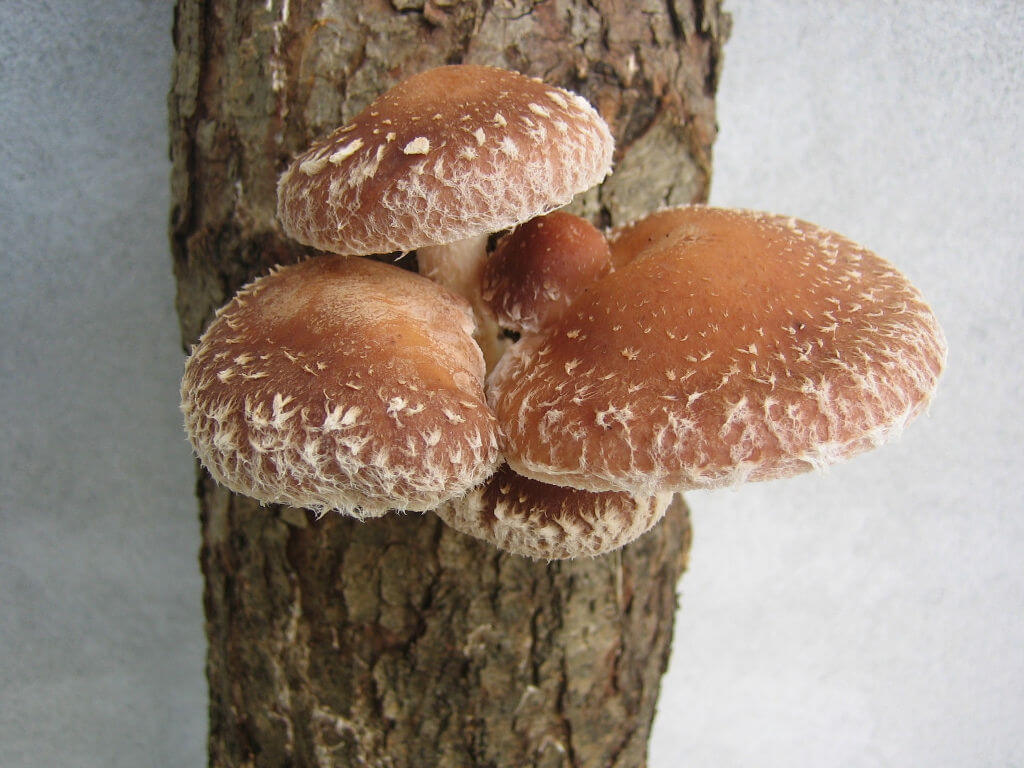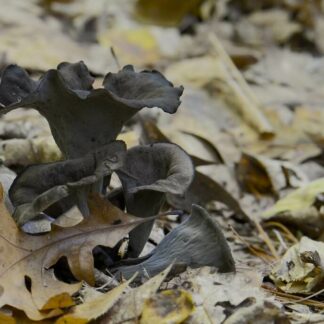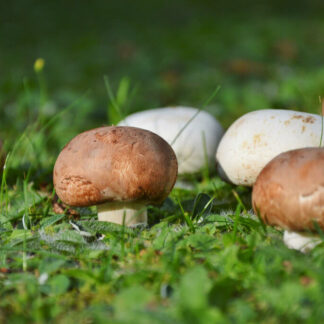Description
Lentinula edodes , called oak lentin (common name in French ), but also known as shiitake , (Japanese shiitake (椎 茸? )), Scented mushroom , ( Chinese : 香菇 ; pinyin : ), or pyogo ( of Korean 표고 ), is an edible mushroom growing in the Far East on the wood of various hardwoods , and which takes its Japanese name from the tree shii (椎? , Castanopsis cuspidata , synonyms: Pasania c. , Shiia sieboldi ) who is his historical host. The latter is a majestic tree with very small leaves, of the family Fagaceae .
It has in addition to a sweet and pleasant fragrance, remarkable nutritional properties, with a richness in different vitamins B , vitamin D , iron , potassium , in the traditional Chinese medicine, it is considered as a neutral and orexigenic element (stimulating l ‘ appetite ) in case of anorexia . Chinese vegetarians call her the ” Empress of Plants ” ( Chinese : 植物 皇后 ; pinyin : ).
Because of all these properties, it is a recurring element of different Chinese, Korean and Japanese cuisines.
Historical
This mushroom has been cultivated for over 1,000 years . It is called xiānggū ( Chinese : 香菇 , literally: “scented mushroom”) in Chinese. The earliest writing of fragrant mushroom cultivation can be attributed to Wu Sang Kwuang, born in the Song dynasty period (960 – 1127). However, a few records show consumption of the non-cultivated mushroom as early as 199. The book of agriculture, “Wang zhen nong shu” ( Chinese : 王 祯 农 书 ; pinyin : ) of King Zhēn , Yuan Dynasty ( 1271-1368) reports consumption under the Han dynasty ( -202 – 220 ).
In Japan, the oldest mention of shiitake dates from the year 378 . In the language of Yamato , the word take ( 竹 , タ ケ? ) Denoted a kami , plant divinized by the animist religion, symbol of vitality and spectacular growth, able to grow “like a bamboo ” or “like a mushroom”.
In Korea, where it is called shiitake ( Hangul : 표고 ), we already found the xvii th century in the recipe Japchae of Yi Chung (in) , become HoJo panseo (Treasury Secretary) with this dish.
Culture
It has been cultivated in China, Korea and Japan for a long time, probably 1,000 years in China ( see historical section ). Traditionally grown on dead branches of deciduous trees pierced with holes in which one introduces mycelium (mushroom white) or on logs of wood, and nowadays most often in mushroom farm on cushions of compost with consistency of cork, pre-seeded . They are immersed in cold water to accelerate fruiting. It is the most cultivated mushroom (fresh or dried) in Asia .
It grows naturally in China at an altitude of 2100 to 2400 meters.
It is now sold fresh in markets of Europe and even grown in France , where his Japanese spelling was sometimes Frenchified in shitake. It is also found dried in Chinese grocery stores, so let them soak for about an hour in water and then drain to cook.
This mushroom species also has the peculiarity of having a very fragile mycelium, so a shake is enough to cut the microfilaments of mycelium and thus to reboot the mushroom 1 .
Nutritional contributions
Shiitake is a source of fiber and more specifically complex sugar polysaccharides beta-glucan type. It has remarkable levels of vitamin B5 (22 mg per 100 g ) 2 , as well as vitamin B2 and vitamin PP ( 33% of the recommended intake per 100 g ). It is also rich in selenium and copper .









